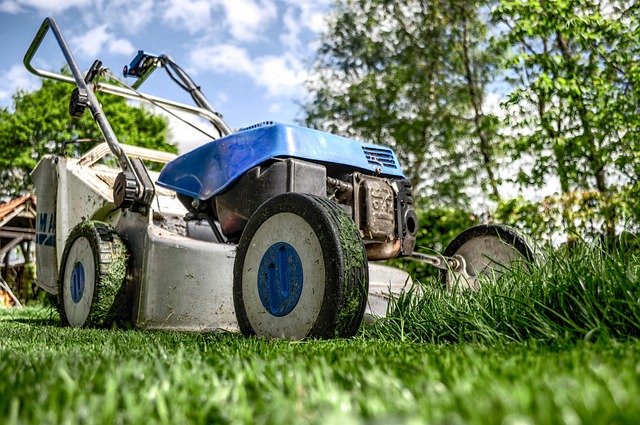Complete Guide to Professional Tree Care and Maintenance
Maintaining healthy trees on your property requires proper knowledge, timing, and professional expertise. From understanding when to trim branches to selecting qualified arborists, homeowners face numerous decisions that impact both tree health and property safety. Professional tree services encompass everything from routine pruning to emergency removal, each requiring specific skills and equipment. Making informed choices about tree care protects your investment while ensuring the long-term beauty and safety of your landscape.

Complete Guide to Professional Tree Care and Maintenance
Trees are valuable assets that enhance property value, provide environmental benefits, and create beautiful landscapes. However, proper tree care requires expertise, specialized equipment, and understanding of tree biology. Whether you need routine maintenance or emergency services, knowing how to navigate the world of professional tree care ensures your trees remain healthy and your property stays safe.
How to Choose Reliable Tree Trimming Services Near You
Selecting qualified tree care professionals involves evaluating credentials, experience, and local reputation. Start by verifying that potential contractors hold proper licensing and insurance coverage, as tree work involves significant liability risks. Look for certified arborists who have completed formal training through organizations like the International Society of Arboriculture.
Request multiple quotes and compare not just pricing, but also the scope of services offered. Reputable companies provide detailed written estimates that specify which trees will be serviced, what work will be performed, and cleanup procedures. Check online reviews and ask for local references, particularly from customers who had similar work completed within the past year.
Discover the Best Time and Way to Trim Your Trees
Timing plays a crucial role in successful tree trimming, with different species requiring specific seasonal approaches. Most deciduous trees benefit from pruning during late winter or early spring while dormant, as this timing minimizes stress and reduces disease transmission risks. However, flowering trees like magnolias should be pruned immediately after blooming to preserve next year’s flower production.
Proper trimming techniques focus on removing dead, diseased, or crossing branches while maintaining the tree’s natural shape. Professional arborists use three-cut methods for larger branches to prevent bark stripping and make clean cuts that heal properly. Avoid topping or excessive crown reduction, as these practices weaken trees and create safety hazards.
The Smart Homeowner’s Guide to Tree Trimming
Informed homeowners understand that tree trimming involves more than just cutting branches. Consider your property’s specific needs, including clearance requirements for power lines, buildings, and walkways. Evaluate each tree’s health, age, and species characteristics before determining the appropriate level of intervention.
Develop a long-term tree care plan that includes regular inspections, preventive maintenance, and budget allocation for professional services. Document your trees’ condition with photos and maintain records of all work performed. This information helps professionals make better decisions and can be valuable for insurance purposes if storm damage occurs.
What to Know Before Hiring a Tree Trimming Company
Before signing contracts, understand exactly what services are included and what additional costs might arise. Ask about cleanup procedures, disposal of debris, and whether stump grinding is included or requires separate pricing. Clarify scheduling expectations and weather contingency plans, as tree work is often weather-dependent.
Verify that the company carries both liability insurance and workers’ compensation coverage. Request to see current certificates and contact the insurance company directly if you have concerns. Understand your local permit requirements, as some municipalities require permits for tree removal or significant trimming work.
| Service Type | Provider Example | Cost Estimation |
|---|---|---|
| Tree Trimming (Medium Tree) | Local Certified Arborists | $300-$800 |
| Tree Removal (Large Tree) | Professional Tree Services | $800-$2,500 |
| Stump Grinding | Specialized Equipment Companies | $100-$400 |
| Emergency Storm Cleanup | 24-Hour Tree Services | $500-$1,500 |
| Tree Health Assessment | Certified Arborist Consultation | $150-$350 |
Prices, rates, or cost estimates mentioned in this article are based on the latest available information but may change over time. Independent research is advised before making financial decisions.
How to Keep Your Trees Healthy and Beautiful Year-Round
Year-round tree health requires attention to watering, mulching, and monitoring for signs of disease or pest problems. Establish proper watering schedules that account for seasonal changes and your local climate conditions. Apply organic mulch around tree bases to retain moisture and suppress weeds, but keep mulch several inches away from tree trunks.
Regular monitoring helps identify problems before they become serious. Watch for changes in leaf color, unusual growth patterns, or signs of insect activity. Schedule professional inspections annually or after severe weather events. Early intervention often prevents minor issues from becoming expensive problems that require tree removal.
Maintaining healthy trees requires combining proper care techniques with professional expertise when needed. By understanding timing, selecting qualified professionals, and implementing consistent maintenance practices, homeowners can enjoy beautiful, healthy trees that enhance their property for decades. Remember that tree care is an investment in both property value and environmental stewardship, making informed decisions essential for long-term success.




